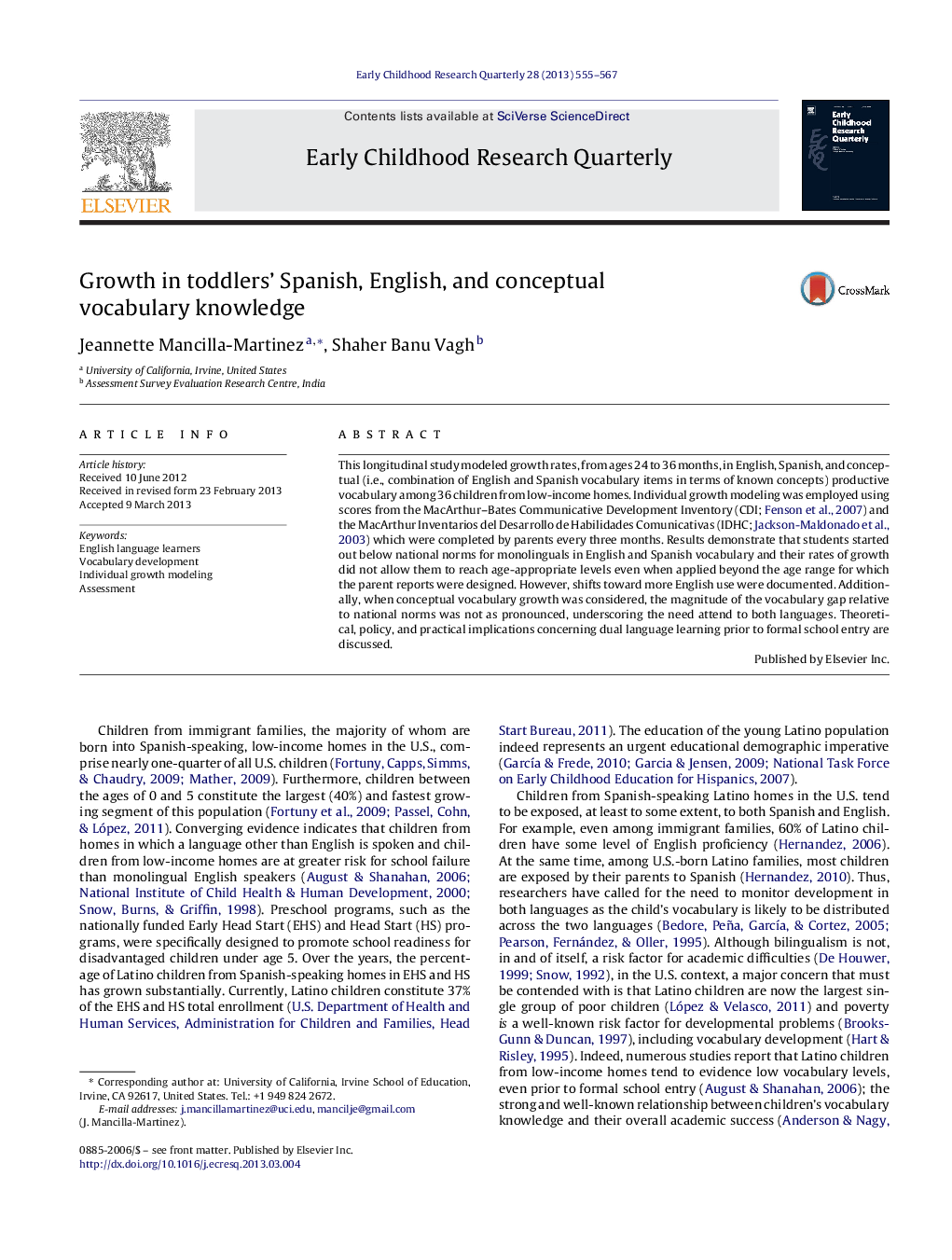| Article ID | Journal | Published Year | Pages | File Type |
|---|---|---|---|---|
| 353950 | Early Childhood Research Quarterly | 2013 | 13 Pages |
•We document toddlers’ vocabulary growth in Spanish, English and conceptual knowledge.•A linear growth trajectory was found.•Vocabulary levels in both languages remained below monolingual national norms.•Growth in English vocabulary outpaced growth in Spanish vocabulary.•Attention to the conceptual score resulted in a less pronounced vocabulary gap.
This longitudinal study modeled growth rates, from ages 24 to 36 months, in English, Spanish, and conceptual (i.e., combination of English and Spanish vocabulary items in terms of known concepts) productive vocabulary among 36 children from low-income homes. Individual growth modeling was employed using scores from the MacArthur–Bates Communicative Development Inventory (CDI; Fenson et al., 2007) and the MacArthur Inventarios del Desarrollo de Habilidades Comunicativas (IDHC; Jackson-Maldonado et al., 2003) which were completed by parents every three months. Results demonstrate that students started out below national norms for monolinguals in English and Spanish vocabulary and their rates of growth did not allow them to reach age-appropriate levels even when applied beyond the age range for which the parent reports were designed. However, shifts toward more English use were documented. Additionally, when conceptual vocabulary growth was considered, the magnitude of the vocabulary gap relative to national norms was not as pronounced, underscoring the need attend to both languages. Theoretical, policy, and practical implications concerning dual language learning prior to formal school entry are discussed.
